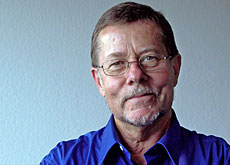American Vox Populi

The congressional elections of November 7 brought a greater than expected change in the political landscape of the United States.
The main facts are by now well known: Democrats regained majorities in both the House of Representatives and the Senate. Power shifts also occurred at the state level.
The suspense that had built up by Election Day, and the joy and sadness of winners and losers, were what made this contest so interesting. Now, a few weeks later, we have the benefits of hindsight; we know a lot more about what motivated voters.
And looking ahead, we know that the lawmakers will face a great deal of work and controversy in the next two years of the Republican presidency – which, incidentally, is partly under the leadership of the first-ever woman Speaker of the House of Representatives, Nancy Pelosi.
Before we review the drama of November 7, it is interesting to step back to a time before the election, when experts tried to distill what the decisive issues were that would forge the outcome.
An array of politicians and writers, gathered by the New York Times, opined on “How the Democrats/the Republicans Can Win.”
Iraq
Democrats, if they wanted to be successful, needed to advance the themes of Iraq, health care reform, what women want, competence in running the government, and giving the country a new direction.
Republicans got the advice that they should return to the ideas that have inspired voters ever since President Reagan: lower taxes, less government, more freedom; as well as the reminder that there have not been any new terrorist attacks since 9/11. (Plus, in parentheses, the subtle suggestion to just denounce the Democrats.)
Experts from both parties felt even then that the decisive issues were of national, not local or state-specific scope.
Who was right? What turned out to be the actual concerns that motivated a majority of voters to give the Democrats the edge?
In addition to political cognoscenti, we now have the exit polls to tell us that two-thirds of voters said the Iraq War was very or extremely important to them and made them favor Democrats decisively.
Angry with Bush
Nearly 60 per cent of voters said they were dissatisfied or angry with President Bush. Almost three-quarters of voters said corruption was very or extremely important in their decision. And Democrats won those voters who rated the economy as extremely important in their decision by a margin of twenty points.
We note that the result surprised the experts. Yes, Iraq was a central issue, but few prognosticators had articulated the sheer sense of disapproval with a sitting president and with congressional mismanagement. Not many had acknowledged either that, despite a growing economy, the middle class had been feeling the squeeze.
In the strength of the decision, this election embodied uniquely a close fit between the either-or majority representation electoral system and the clear view of most voters which party-en-bloc would really suit them better.
You were either for or against; 60 per cent of Independents aligned themselves with the Democrats, 40 per cent with the Republicans. System and sentiments were thus quite well matched. This, of course, leaves dozens of important substantive issues for Congress to work out.
Swiss difference
This is where the Swiss system looks so much more differentiated. Not only do multiple political parties offer choices based on a combination of basic programs, agendas of current problems to be tackled, and the varied personalities on the lists of candidates, but initiatives and referendums allow scores of issues to be decided by voters in between the parliamentary elections held every four years. The match between voting system and voter options seems to be built in, not coincidental.
I now turn to my favorite post-election statistics, those tables that show what population segment voted for whom.
This fall’s figures did not disappoint: the Democrats did well among young voters age 18-29; 60 per cent of this age group voted for them.
The “God Gap”
The “God Gap” widened: Democratic Party gains were concentrated among non-Christian and secular voters. Or, to focus on another religious difference, white Protestants gave Democrats the vote only at the rate of 37 per cent; white Catholics at the rate of 50 per cent.
Finally “the gender gap has become a defining feature of US elections over the past two and one-half decades…,” says Susan Carroll of Rutgers University. Across the board, by a rate of about five per cent – and up to ten per cent in critical races – women voted more Democratic than men.
The humorist author Richard Armour (1906-1989) said, “Politics, it seems to me, for years, or all too long, has been concerned with right or left instead of right or wrong,” 2006 was one of those elections that proved him wrong.
Jurg Siegenthaler
The views expressed in this column are not necessarily those of swissinfo.
The American voting system is based on majority-representation, single-member, “winner-take-all” election districts rather than proportional representation.
This arrangement heavily favors a two-party constellation of power, and also permits “gerrymandering,” that is, the periodic redrawing of district boundaries so as to favor one party or the other.
Voting registers are compiled state by state and according to specific rules, with only some constitutional guarantees in place.
The US does not have a civil registry: no one knows who really lives where, so registering potential voters amounts to a special effort, promoted, if not by all of the states, then certainly by civil-rights and other civic organizations.
Voters register as Democrats, Republicans, or Independents.
Every month retired professor, Jurg Siegenthaler, compares and contrasts aspects of life in Switzerland with that of his adopted homeland, the United States.
He emigrated to the United States from Switzerland in 1967, and is now a retired university professor living close to Washington, DC. He is a graduate of Bern University (Dr.rer.pol., 1966).
His fields of teaching and research encompassed economic history, social theory and social policy analysis. Throughout his career, he has maintained close comparative research interests in the US and Switzerland.
He is associated with the Institute for Socio-Financial Studies, a research non-profit that has done a lot of work improving financial literacy at the community level.
Since his retirement, Jurg Siegenthaler has broadened his involvement in community organizations and in the arts. He is married and lives with his wife in Silver Spring, Maryland.

In compliance with the JTI standards
More: SWI swissinfo.ch certified by the Journalism Trust Initiative









You can find an overview of ongoing debates with our journalists here . Please join us!
If you want to start a conversation about a topic raised in this article or want to report factual errors, email us at english@swissinfo.ch.